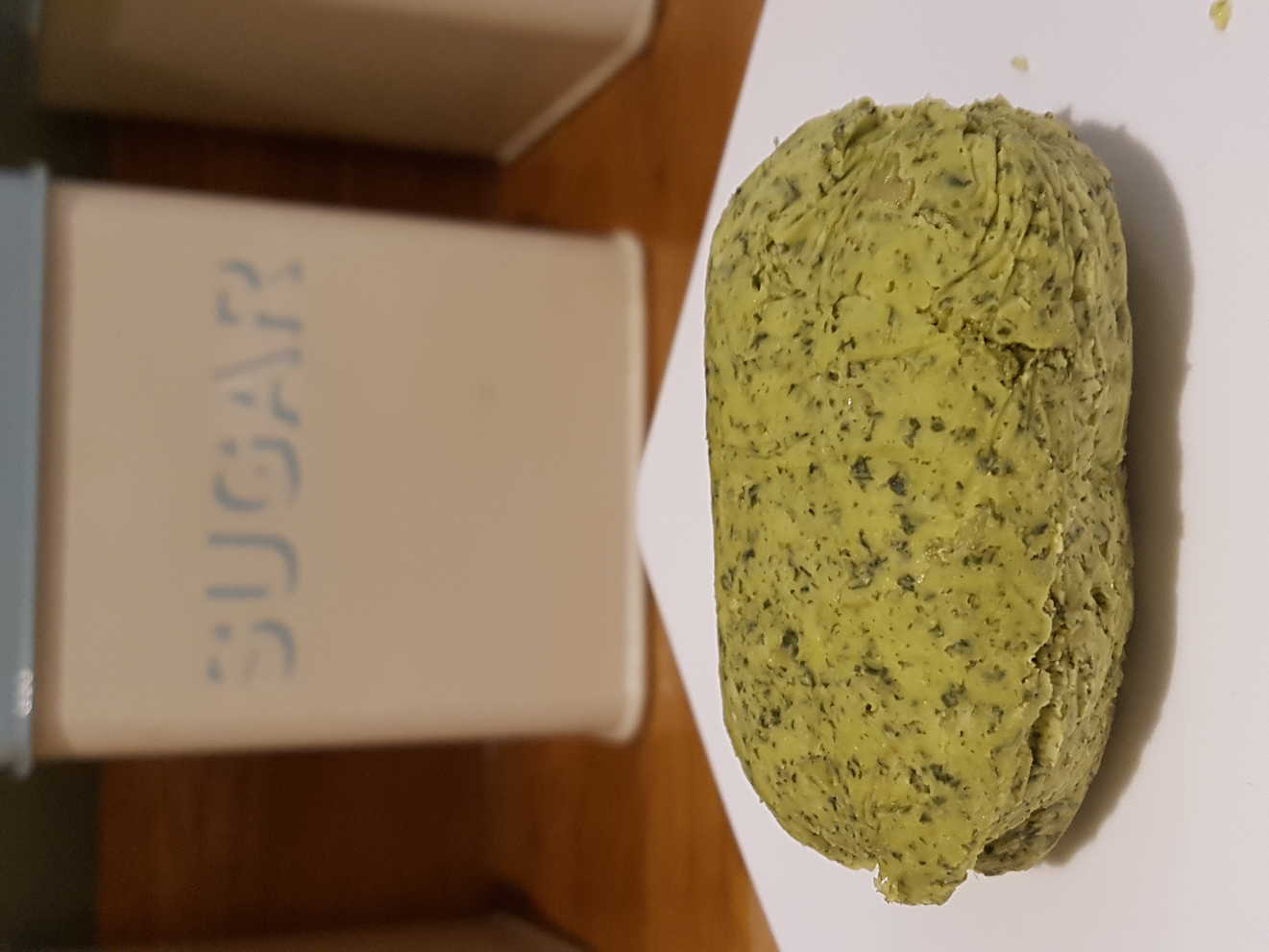
Scone

Ha - fooled you! It's not that kind of scone!
I recently made trips up to Scotland, once to visit the ashes of my Mum, or the river where they were scattered, and once to visit Scone Palace, amongst other things.
Those things included Flora, Cambo Country House, and the Lands of Loyal hotel, where we drank possibly the most revolting red wine I've every tried: an unfiltered, organic Nero D'Avola horror from Sicily.
To be fair, they did warn us it might not be what we expected, if what we had expected was drinkable. It turns out to make an excellent cooking wine though - so nothing wasted, nothing lost.
The hotel is an impressive building, even if their wine cellar leaves something to be desired, featuring a striking sitting room with obligatory open fireplace, a fine bird-cage, and a magnificent Lagonda.
Scone Palace is, of course, the original home of the Scone of Destiny - whose recipe was famously stolen in 1296 by Edward Longshanks and removed to Westminster Abbey from where it was broken up and distributed to all the seaside tearooms of England.
It was also the seat of most, if not all, of Scottish history between Shakespeare's 11th century MacBeth and the crowning of Charles II there in 1651.
After which its story ended.
It is now a venue for meetings of Scottish dog-fanciers. Though it still possesses remarkable gardens, including an historic arboretum, and a delightful maze which will reward your dedication to navigating your way to its centre with a nice statue of a lady and an empty pond. And an emergency exit, so you don't have to Ariadne your way back.
My family, or at least some of us, have been regularly heading up to Eskdalemuir in the Scottish Borders
to celebrate Mum's death. Obviously celebrate isn't the right word, though you wouldn't know it from the photos.
We visit the Buddhist monastery at Samye Ling and the Naga House in the White Esk river where we scattered Mum's ashes.
But our usual camping ground became unavailable over COVID so we've had to find somewhere else. Fortunately there's a lovely place near Hawick called Rue Du Chateau; it's a bit further away but it's a much nicer campsite, since you don't have to share it with caravans and mobile homes.
It has a river and a composting toilet in an old horse box, and if you're lucky you may be visited by the local ducks and chickens. If you're unlucky you'll be visited by the wasps.
As is traditional we dined on camping spag bol for which I had prepared an ersatz Campbell's oxtail soup at great expense.
It tasted almost like the real thing 😢
We visit the Buddhist monastery at Samye Ling and the Naga House in the White Esk river where we scattered Mum's ashes.
But our usual camping ground became unavailable over COVID so we've had to find somewhere else. Fortunately there's a lovely place near Hawick called Rue Du Chateau; it's a bit further away but it's a much nicer campsite, since you don't have to share it with caravans and mobile homes.
It has a river and a composting toilet in an old horse box, and if you're lucky you may be visited by the local ducks and chickens. If you're unlucky you'll be visited by the wasps.
As is traditional we dined on camping spag bol for which I had prepared an ersatz Campbell's oxtail soup at great expense.
It tasted almost like the real thing 😢
Lamb Shanks Braised in Red Wine
main meat
During an otherwise pleasant dinner at a very old-fashioned Scottish holiday lodge Flora and I made the mistake of choosing a particularly horrible
organic, vegan, unfiltered Scicilian Nero D'avola red wine by Fabrizio Vella. It was utterly undrinkable.
Fortunately it makes an excellent braising wine.
Thanks to Nagi for the basic outline, though I enhanced the recipe with a touch of soy and fish sauce, and some extra shallots and mushrooms à la beef bourgignon. Don't worry you won't taste the fish sauce, but maybe you could throw in a few minced anchovies instead?
Fortunately it makes an excellent braising wine.
Thanks to Nagi for the basic outline, though I enhanced the recipe with a touch of soy and fish sauce, and some extra shallots and mushrooms à la beef bourgignon. Don't worry you won't taste the fish sauce, but maybe you could throw in a few minced anchovies instead?
Serves 4
Ingredients
- 4 lamb shanks
- oil for shallow frying
- 3 carrots, finely chopped
- a few bay leaves
- 1 large onion, finely chopped
- large handful of thyme
- 3 sticks celery, finely chopped
- half a dozen cloves garlic, crushed
- 2 tblsps tomato purée
- glass brandy
- 1 bottle red wine
- 1 tablespoon soy sauce
- 1 tablespoon fish sauce
- 1 tin chopped tomatoes
- chicken stock
Extras:- oil
- butter
- a dozen round shallots or pickling onions, peeled
- 200g button mushrooms, cleaned
- 2 cloves garlic, minced
Pre-heat the oven to 180-200°C/360-400°F/Gas Mark 5-6.
Heat a large oven-proof casserole with a generous puddle of oil. Season the shanks with salt & pepper and sear them all, all over. Do it in batches so as not to overload the pan. Set aside.
Over high heat add the chopped carrots and fry until colouring.
Throw in the bay leaves, the chopped onions and the crushed garlic cloves and fry until colouring.
Add the chopped celery and the thyme and fry until softened.
Add the tomato purée and cook until the oil separates. De-glaze the pan with a glass of brandy, then add the red wine and bubble it up. Stir in the tin of tomatoes, the soy and fish sauce.
Then tightly pack the browned shanks back in to the pot along with any of their juices. Add enough stock or water to almost cover everything.
Bring to the boil, cover and put in the oven for 2 hours until the meat is tender.
Now lift out the shanks, pour out the cooking liquid and press it through a sieve. Return everything (except the exhausted pulp which you can keep for sandwiches Reader - do not use it in sandwiches) back into the casserole and put it back in the oven uncovered. Continue cooking and reducing for 30-60 minutes until the meat is almost falling off the bones.
In the meantime heat oil in a frying pan and brown the shallots all over, shaking occasionally, and add them to the casserole. Then add a generous knob of butter and the sliced garlic to the pan, allow the butter to foam and the garlic to begin to colour then add the mushrooms. Fry until they begin to colour, shaking occasionally. Add these and their juices to the casserole.
Heat a large oven-proof casserole with a generous puddle of oil. Season the shanks with salt & pepper and sear them all, all over. Do it in batches so as not to overload the pan. Set aside.
Over high heat add the chopped carrots and fry until colouring.
Throw in the bay leaves, the chopped onions and the crushed garlic cloves and fry until colouring.
Add the chopped celery and the thyme and fry until softened.
Add the tomato purée and cook until the oil separates. De-glaze the pan with a glass of brandy, then add the red wine and bubble it up. Stir in the tin of tomatoes, the soy and fish sauce.
Then tightly pack the browned shanks back in to the pot along with any of their juices. Add enough stock or water to almost cover everything.
Bring to the boil, cover and put in the oven for 2 hours until the meat is tender.
Now lift out the shanks, pour out the cooking liquid and press it through a sieve. Return everything (except the exhausted pulp which you can keep for sandwiches Reader - do not use it in sandwiches) back into the casserole and put it back in the oven uncovered. Continue cooking and reducing for 30-60 minutes until the meat is almost falling off the bones.
In the meantime heat oil in a frying pan and brown the shallots all over, shaking occasionally, and add them to the casserole. Then add a generous knob of butter and the sliced garlic to the pan, allow the butter to foam and the garlic to begin to colour then add the mushrooms. Fry until they begin to colour, shaking occasionally. Add these and their juices to the casserole.
These extras, particularly the onions, will fall apart if you cook them for much over 20 minutes, so only add them when the meat is approaching done.
Serve each shank on bed of mashed potato or cauliflower purée
with a selection of the shallots and mushrooms and a drizzle of the reduced sauce.
Absolutely gorgeous.
I served mine with the cauliflower purée and peas with minted butter - a great combination of flavours.
If, like mine, your cooking liquid hasn't thickened sufficiently then boil it hard after you've removed the meat and vegetables for serving until it turns syrupy and coats the back of a spoon.
I served mine with the cauliflower purée and peas with minted butter - a great combination of flavours.
If, like mine, your cooking liquid hasn't thickened sufficiently then boil it hard after you've removed the meat and vegetables for serving until it turns syrupy and coats the back of a spoon.
Minted Butter
ingredient
Ingredients- mint leaves, minced
- squeeze of lemon or lime juice
- lemon or lime zest
- 1 garlic clove, crushed
- salt & pepper
- softened butter
Mince the mint leaves then grind them in a pestle and mortar with a grating of sea salt and coarse pepper.
Add crushed garlic, a squeeze of lemon or lime and some of the zest and churn to a paste.
Blend with melted butter, roll up in clingfilm or baking paper and chill.
Add crushed garlic, a squeeze of lemon or lime and some of the zest and churn to a paste.
Blend with melted butter, roll up in clingfilm or baking paper and chill.
Really good.
Adjust the proportions as you like, I wanted mine a vivid green with a strong mint flavour, so I used plenty of mint. If you're making enough I guess you could use a food processor. Maybe.
Adjust the proportions as you like, I wanted mine a vivid green with a strong mint flavour, so I used plenty of mint. If you're making enough I guess you could use a food processor. Maybe.
Cauliflower Purée with Parmesan
side veg cheese
I took Nagi's mashed cauliflower, replaced the parmesan with pecorino romano and multiplied the quantity by 10.
It seemed to like it.
I also threw a bunch of dill into the water to cook with the cauliflower florets for extra flavour, then just discarded it before draining and blending.
You could cook garlic cloves with the cauliflower and blend them in too as Nagi does.
I also threw a bunch of dill into the water to cook with the cauliflower florets for extra flavour, then just discarded it before draining and blending.
You could cook garlic cloves with the cauliflower and blend them in too as Nagi does.
Serves 4
Ingredients
- 1 cauliflower
- 200g parmesan or similar hard cheese
- cream, sour cream or milk
To Serve:- parsley or dill, chopped
- butter herbed or minted, melted
Break or chop the cauliflower into similar-sized florets.
Cook until completely soft in boiling salted water.
Drain, then blend until smooth with just enough of the cooking water, cream, crème fraîche, or milk.
Beat in the grated cheese.
Season to taste and serve with melted herb butter, chopped parsley or dill.
Season to taste and serve with melted herb butter, chopped parsley or dill.
Excellent.
Warmed Burrata Salad with Roast Tomatoes and Grilled Nectarine
salad cheese
The recipe from which I stole this idea used apricots,
but I had nectarines - so there.
I'm sure any stone fruit would do it justice.
Ingredients
- rocket
- cherry tomatoes
- burrata cheese
- apricot, peaches, nectarines or green plums
- red or spring onion, or shallots, sliced
- garlic, minced
- sliced ham
- olive oil
- salt & pepper
Dressings:- parsley, thyme, or basil
- balsamic vinegar
- chilli
- vinaigrette
Pre-heat the oven to 200°C/400°F/Gas Mark 6.
Heat a grill or griddle pan.
Mix cherry tomatoes with olive oil, minced garlic and thinly sliced red onion, spring onions or shallots. Season with a little salt and pepper and some thyme leaves if you like.
Lay in a layer in a small ovenproof dish, and bake for 10-15 minutes until the tomatoes begin to split. Place the burrata on top and return to the oven for another 2-3 minutes until the cheese begins to soften, but don't let it collapse.
Meanwhile, halve the apricot, peach, nectarine, or plum, remove the stone, season the cut with salt and a generous amount of pepper, drizzle with olive oil and grill the cut-side or fry it in a roasting hot griddle pan until the griddle lines are nicely charred into the fruit.
Add a slice of ham and griddle that too. Slice up the ham across the griddle lines.
Dress the tomatoes with balsamic vinegar and serve everything up on a bed of rocket, topped with the warm burrata.
Scatter with herbs of choice and preferred salad dressing.
Heat a grill or griddle pan.
Mix cherry tomatoes with olive oil, minced garlic and thinly sliced red onion, spring onions or shallots. Season with a little salt and pepper and some thyme leaves if you like.
Lay in a layer in a small ovenproof dish, and bake for 10-15 minutes until the tomatoes begin to split. Place the burrata on top and return to the oven for another 2-3 minutes until the cheese begins to soften, but don't let it collapse.
You can also warm your burrata by resting it in hot water, but you do risk it splitting and diluting itself if it's a cheap knockoff,
so you might be advised to loosely wrap it in clingfilm first.
Meanwhile, halve the apricot, peach, nectarine, or plum, remove the stone, season the cut with salt and a generous amount of pepper, drizzle with olive oil and grill the cut-side or fry it in a roasting hot griddle pan until the griddle lines are nicely charred into the fruit.
Add a slice of ham and griddle that too. Slice up the ham across the griddle lines.
Dress the tomatoes with balsamic vinegar and serve everything up on a bed of rocket, topped with the warm burrata.
Scatter with herbs of choice and preferred salad dressing.
You can flavour with parsley, thyme, basil, sliced chilli, or coriander.
Dress with olive oil, lime or lemon juice, a vinaigrette, or just the tomatoes' juices.
I used some coconut-lime dressing and a sliced chilli, it was delicious.
You could mix frisée or thinly sliced radicchio in with the rocket.
I used some coconut-lime dressing and a sliced chilli, it was delicious.
You could mix frisée or thinly sliced radicchio in with the rocket.
Langoustine and Black Pudding Crumble
fish meat main
Whilst on a recent holiday in Edinburgh, Flora treated me to a haunch of McLeod's Stornaway black pudding.
But we couldn't eat it all, so she generously donated the leftovers for my return to Bradford,
whereupon I thought I'd match it up with another Scottish staple - langoustines.
Well, I couldn't find any langoustines - there's a rumour Sainsbury sells them, but not in the poxy Sainsbury near me, apparently. So I used a bag of frozen king prawns instead.
I took some advice on the subject of making shellfish stock and roasted the prawn heads and shells before frying them to make the sauce. I also added paprika and deglazed with brandy before adding the white wine.
It's not the season for wild garlic, so I threw a couple of minced garlic cloves in with the bread, as well as a very generous handful of parsley leaves and all the fennel fronds that came with the bulb so it blends up good and green.
I felt the sauce was a little thin, so I sliced half the fennel bulb and cooked it in the sauce for a few minutes before adding the beans. If you wanted to bulk it further you might add some cubes of cooked potato.
Well, I couldn't find any langoustines - there's a rumour Sainsbury sells them, but not in the poxy Sainsbury near me, apparently. So I used a bag of frozen king prawns instead.
I took some advice on the subject of making shellfish stock and roasted the prawn heads and shells before frying them to make the sauce. I also added paprika and deglazed with brandy before adding the white wine.
It's not the season for wild garlic, so I threw a couple of minced garlic cloves in with the bread, as well as a very generous handful of parsley leaves and all the fennel fronds that came with the bulb so it blends up good and green.
I felt the sauce was a little thin, so I sliced half the fennel bulb and cooked it in the sauce for a few minutes before adding the beans. If you wanted to bulk it further you might add some cubes of cooked potato.
Serves 4
Ingredients
- 16 langoustines, cooked (or about 400g prawns)
- 1 onion, peeled, chopped
- 1 leek, chopped
- 1 fennel bulb, chopped
- couple garlic cloves, crushed
- 1 star anise
- 1 tablespoon smoked paprika optional
- 200ml of white wine
- 200ml of double cream
- 200-250g of white beans, cooked
- vegetable oil
- 150g of black pudding
For the Wild Garlic Crust:- 10 wild garlic leaves or a few garlic cloves
- 150g of white breadcrumbs
- 60g of butter, melted
- parsley
- salt
Remove the tail meat from the langoustine and set aside, reserving the shells to make a stock for the sauce.
Pour in enough water to just cover. Simmer for 1 hour then strain through a sieve into another saucepan. Place back on the heat and reduce down to 200ml, then add the cream and reduce to a sauce consistency. Keep the sauce warm.
Cut the black pudding into 2cm pieces and deep-fry at 180°C until just crispy. Remove and drain on kitchen paper.
For the wild garlic crust, add the breadcrumbs, a few or many! parsley leaves and 6 leaves of wild garlic or a couple of garlic cloves to a blender and blitz until green in colour. Add any fronds from the fennel bulb. Place in a bowl, mix through the melted butter and season with a little salt and pepper.
Warm the sauce over a gentle heat, I sliced half my fennel bulb and added it to the sauce to cook. add the white beans and cook until the beans have warmed through. Add the crispy black pudding and the langoustine meat.
To finish the sauce, add a little chopped wild garlic and reheat for 2 minutes. Spoon the mixture into a shallow serving dish or 4 individual dishes or ramekins.
Sprinkle the wild garlic crumbs over the top and place under a hot grill to colour and crisp up the crumb. Serve immediately.
My prawns were frozen uncooked, so after defrosting then shelling them I blanched the bodies in salted water for about 2 minutes, then cooled them quickly in iced water.
You'll need to remove the intestinal tract, and cut them in half or sections cross-ways - about the same size as the black pudding.
Lubricate the shells and heads with a little oil, then roast for 20-30 minutes at Gas Mark 4 until they colour deep red and slightly caramalise.
Heat oil and butter in a large pan and fry the roast shells until nicely coated, then add the onion, leek and fennel.
Add the garlic, star anise and paprika if using. Fry a little more, then deglaze with brandy if you like then white wine.You'll need to remove the intestinal tract, and cut them in half or sections cross-ways - about the same size as the black pudding.
Pour in enough water to just cover. Simmer for 1 hour then strain through a sieve into another saucepan. Place back on the heat and reduce down to 200ml, then add the cream and reduce to a sauce consistency. Keep the sauce warm.
Cut the black pudding into 2cm pieces and deep-fry at 180°C until just crispy. Remove and drain on kitchen paper.
For the wild garlic crust, add the breadcrumbs, a few or many! parsley leaves and 6 leaves of wild garlic or a couple of garlic cloves to a blender and blitz until green in colour. Add any fronds from the fennel bulb. Place in a bowl, mix through the melted butter and season with a little salt and pepper.
Warm the sauce over a gentle heat, I sliced half my fennel bulb and added it to the sauce to cook. add the white beans and cook until the beans have warmed through. Add the crispy black pudding and the langoustine meat.
To finish the sauce, add a little chopped wild garlic and reheat for 2 minutes. Spoon the mixture into a shallow serving dish or 4 individual dishes or ramekins.
Sprinkle the wild garlic crumbs over the top and place under a hot grill to colour and crisp up the crumb. Serve immediately.
Really good, if a bit on the sloppy side.
I served mine with a lettuce and tomato salad dressed with olive oil and balsamic vinegar.
I served mine with a lettuce and tomato salad dressed with olive oil and balsamic vinegar.
Accidental Liver, Deep Fried
main meat
On my weekly meat-walk into Brighouse I developed a craving for devilled kidneys, so kidney is what I tried to order when I finally arrived at the butcher's.
Unfortunately, the word which came out of my mouth was liver.
After the butcher spent ten minutes rummaging through the bottom of his fridges (I always seem to arrive just before he closes up)
for the last bag of calf livers I didn't have the heart to tell him.
So I went home with accidental liver.
I bought a couple of cheeses from Brighouse's wine-and-cheese shop to try some possible liver pairings, and hunted around for novelty cooking ideas: It seems American southerners will deep-fry their chicken livers (they'll deep-fry anything), and Azerbaijanis like flouring and deep-frying beef liver. So I thought I'd try that out.
I can report that deep-fried liver is pretty good - crispy on the outside and oozing bloody succulence in the centre. Served with a blue cheese dressing on an onion-heavy salad makes for a great match.
Yum!
Shallow-fried with feta and sweetcorn is less good. Especially if you overcook the liver 🙁
Too late to trial, I also came across an intriguing suggestion for poaching liver in a mixture of butter and Vermouth. As a particularly disappointing movie sequel puts it: A good question, for another time...
So I went home with accidental liver.
I bought a couple of cheeses from Brighouse's wine-and-cheese shop to try some possible liver pairings, and hunted around for novelty cooking ideas: It seems American southerners will deep-fry their chicken livers (they'll deep-fry anything), and Azerbaijanis like flouring and deep-frying beef liver. So I thought I'd try that out.
I can report that deep-fried liver is pretty good - crispy on the outside and oozing bloody succulence in the centre. Served with a blue cheese dressing on an onion-heavy salad makes for a great match.
Yum!
Shallow-fried with feta and sweetcorn is less good. Especially if you overcook the liver 🙁
Too late to trial, I also came across an intriguing suggestion for poaching liver in a mixture of butter and Vermouth. As a particularly disappointing movie sequel puts it: A good question, for another time...
Ingredients
- liver
- milk or buttermilk
- flour
- salt & pepper
- oil for deep-frying
Trim the livers of membranes, gristle, connective tissue or excess fat.
Cut into equal-sized pieces (if they're large); use the natural lobe-lines as guides.
Put in a bowl, cover with milk and leave for an hour.
Preheat a deep pan of oil to 350°F/175°C.
Drain the liver and roll the pieces in the flour. Drop them into the oil and fry for 2-3 minutes until golden.
Put in a bowl, cover with milk and leave for an hour.
Opinions vary about the utility of this milky bathing - allegedly it can remove any excess bitterness, impurities, and blood from the liver.
I don't normally find liver particularly bitter, but I did the soaking in this case anyway 'cos the liver was pretty old and I wanted to give it all the help I could.
Buttermilk might be a better choice since it's greater acidity should also help tenderize the meat.
Feel free to add hot sauce or other flavourings to your milk.
Sieve some flour into a shallow bowl and season it generously. Again you could add flavourings like cayenne or paprika.Buttermilk might be a better choice since it's greater acidity should also help tenderize the meat.
Feel free to add hot sauce or other flavourings to your milk.
Preheat a deep pan of oil to 350°F/175°C.
Drain the liver and roll the pieces in the flour. Drop them into the oil and fry for 2-3 minutes until golden.
If you want an even crispier Southern coating (and why wouldn't you?) then prepare two extra bowls with beaten egg and panko breadcrumbs.
Roll the livers first in flour, then egg, then breadcrumbs, then fry them.
Scoop out the liver and drain on kitchen paper.
Quite good. For liver 😉
Serve with hot (as in spice) sauce, a blue cheese dressing (add minced spring onions) or a hot (as in temperature) blue cheese sauce.
Serve with hot (as in spice) sauce, a blue cheese dressing (add minced spring onions) or a hot (as in temperature) blue cheese sauce.



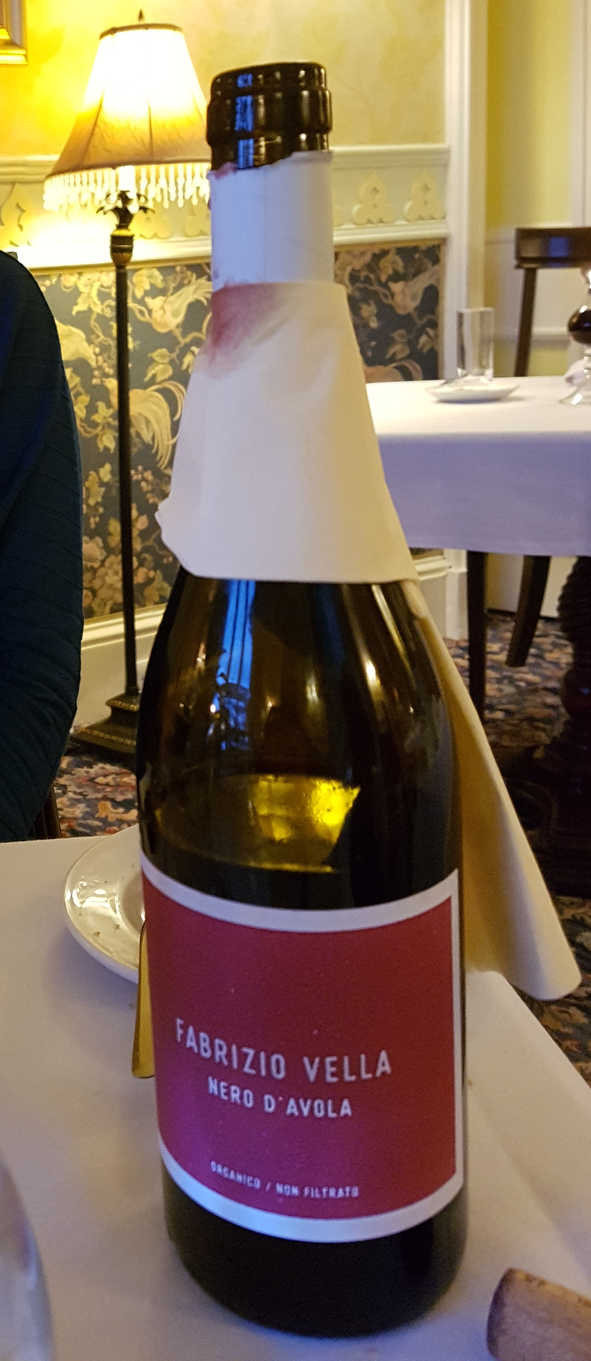


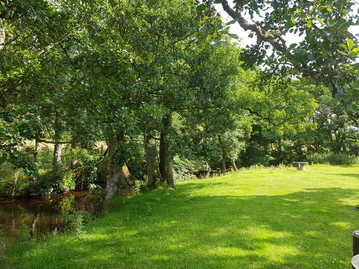
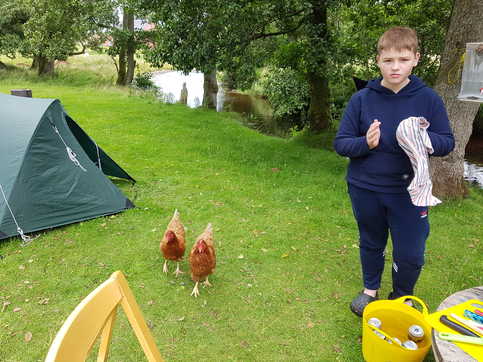

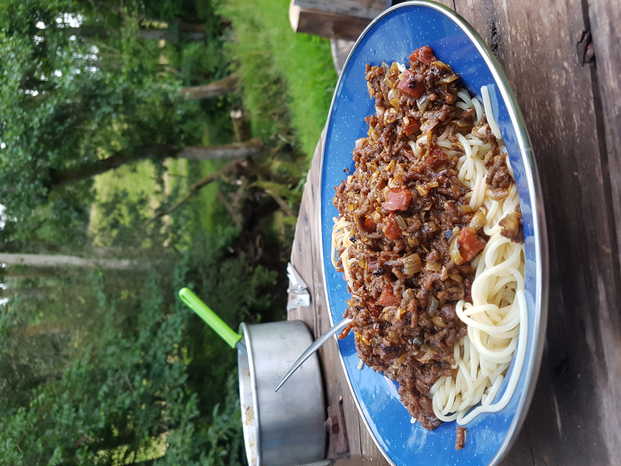
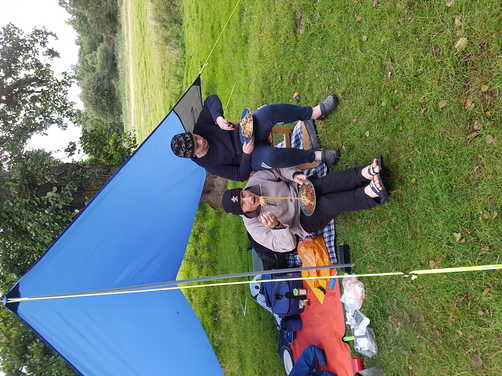
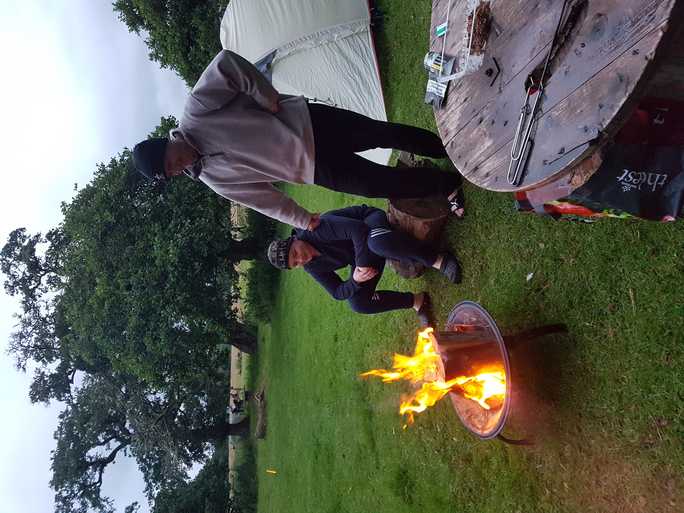
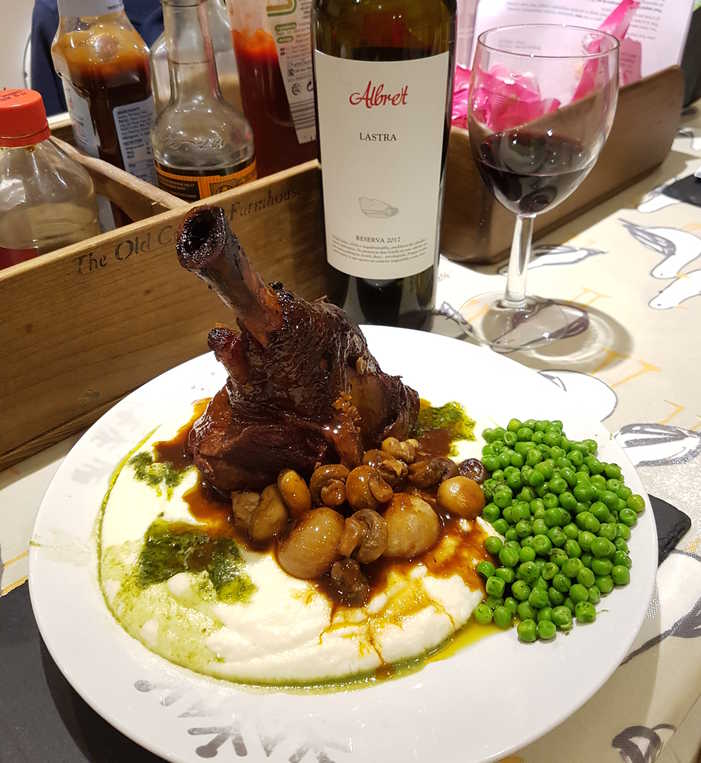
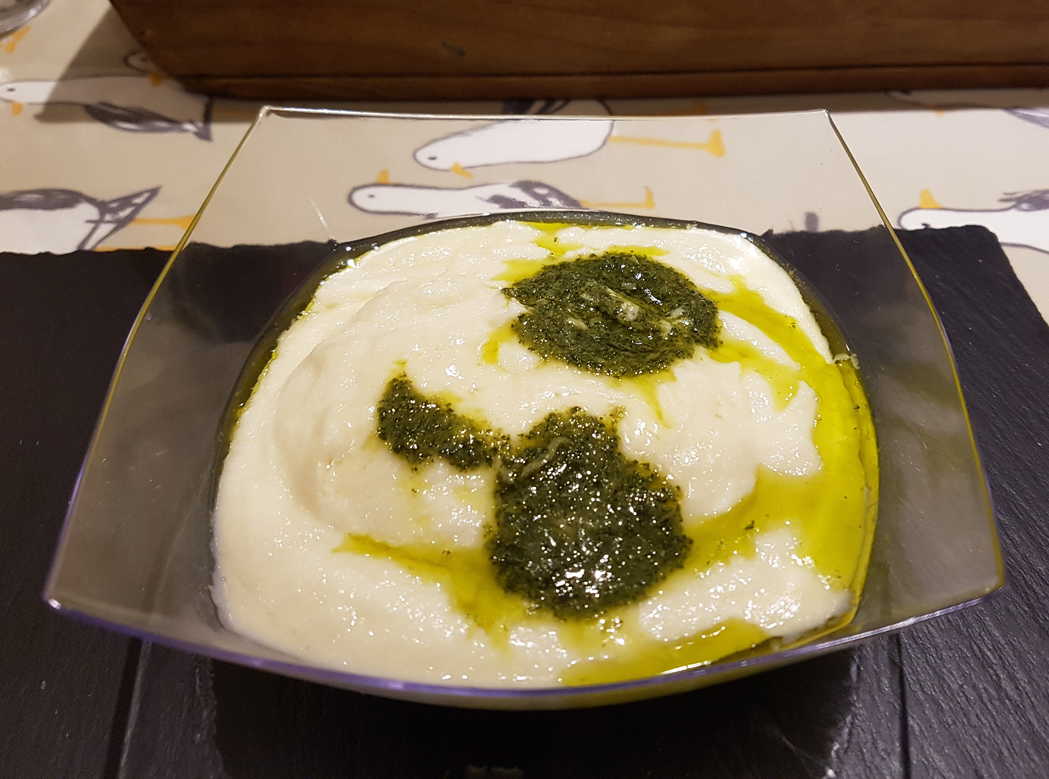
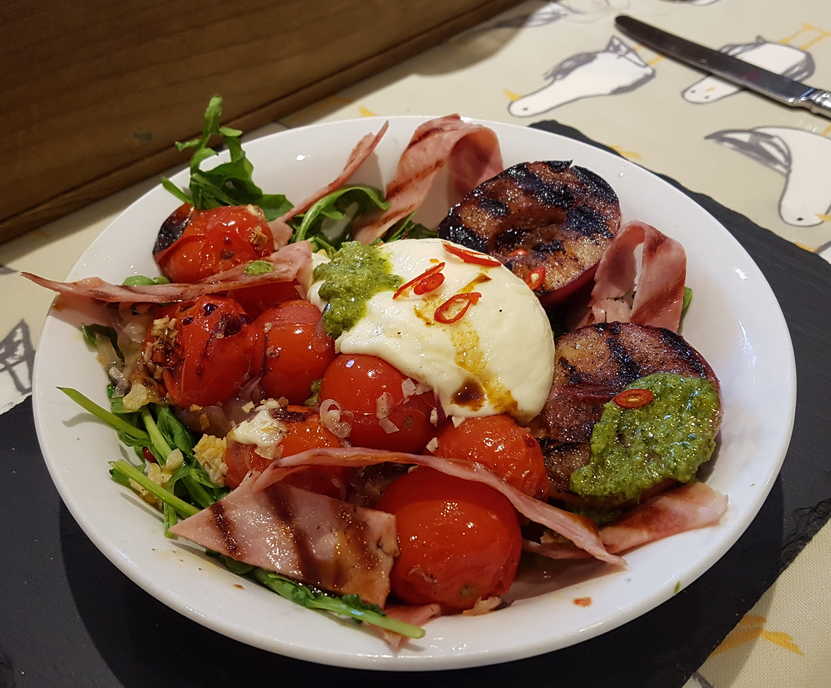
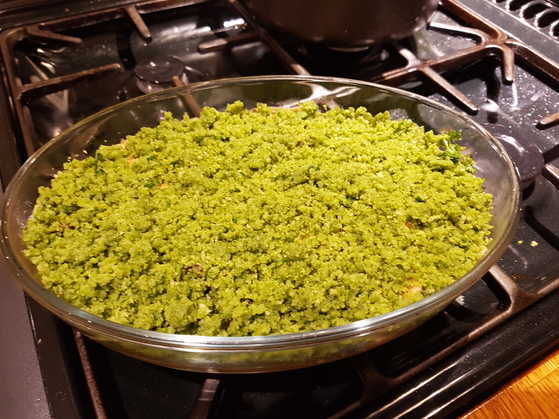
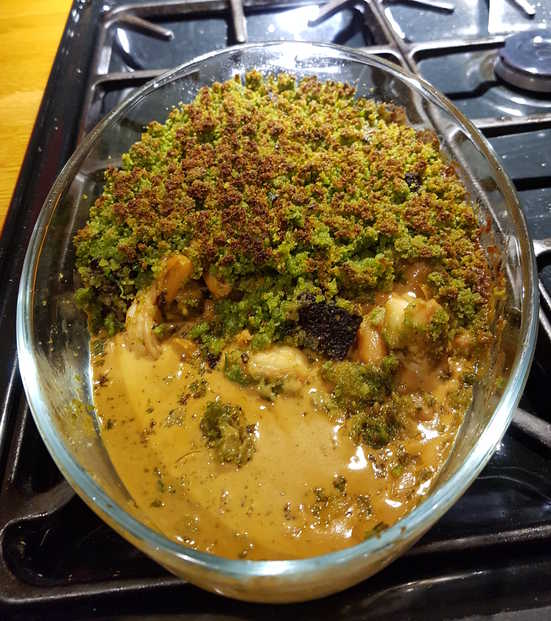
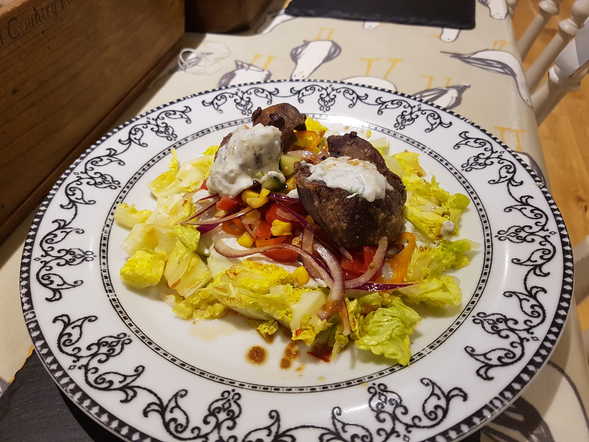
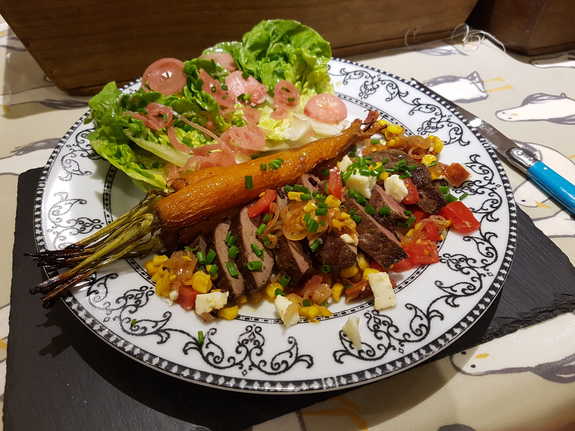
Great family trips all around see you for the next adventure x
#1 – 25 September, 2023 at 8:09 am
😘
#2 – 25 September, 2023 at 7:30 pm